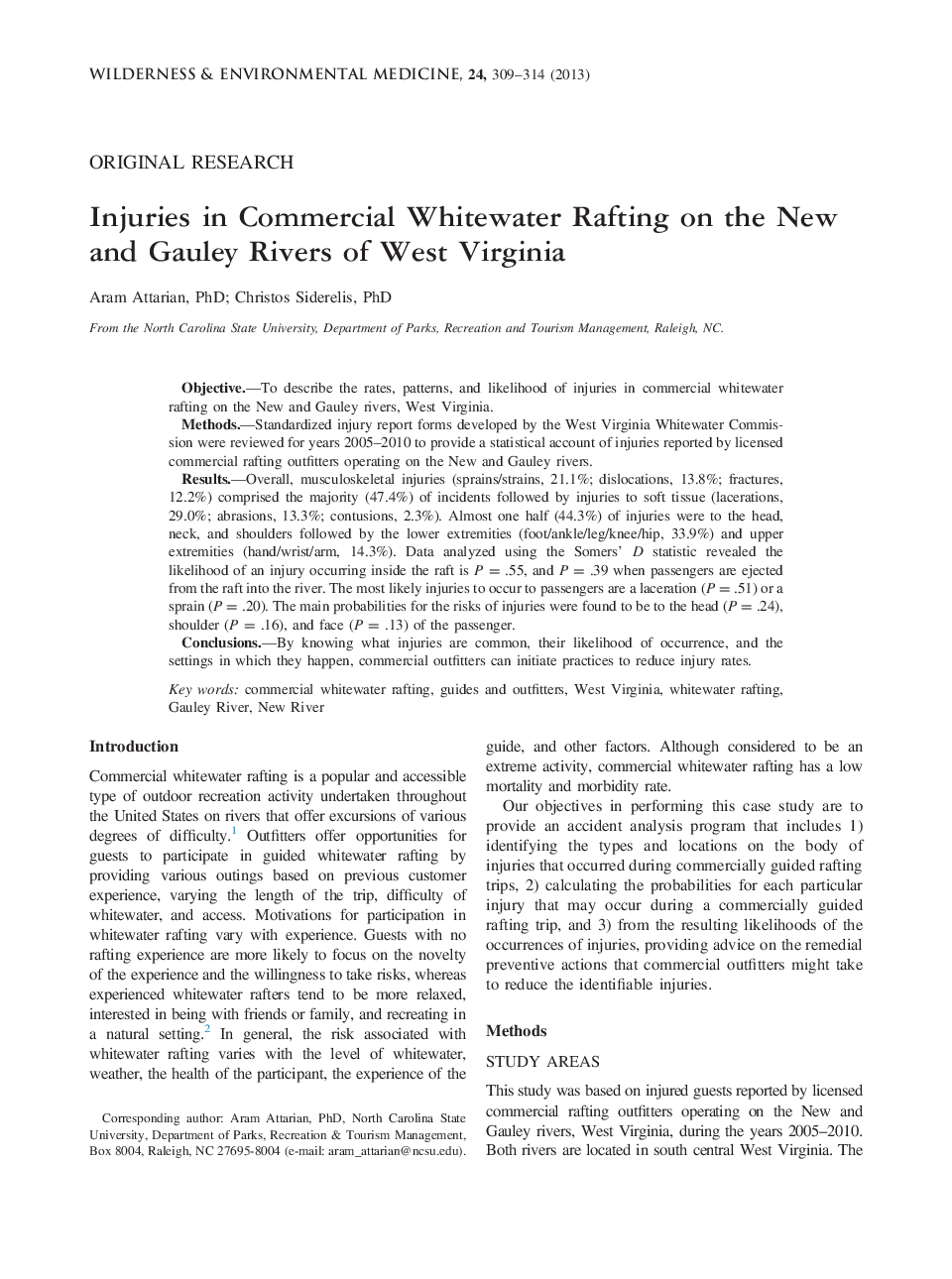| Article ID | Journal | Published Year | Pages | File Type |
|---|---|---|---|---|
| 2614735 | Wilderness & Environmental Medicine | 2013 | 6 Pages |
ObjectiveTo describe the rates, patterns, and likelihood of injuries in commercial whitewater rafting on the New and Gauley rivers, West Virginia.MethodsStandardized injury report forms developed by the West Virginia Whitewater Commission were reviewed for years 2005–2010 to provide a statistical account of injuries reported by licensed commercial rafting outfitters operating on the New and Gauley rivers.ResultsOverall, musculoskeletal injuries (sprains/strains, 21.1%; dislocations, 13.8%; fractures, 12.2%) comprised the majority (47.4%) of incidents followed by injuries to soft tissue (lacerations, 29.0%; abrasions, 13.3%; contusions, 2.3%). Almost one half (44.3%) of injuries were to the head, neck, and shoulders followed by the lower extremities (foot/ankle/leg/knee/hip, 33.9%) and upper extremities (hand/wrist/arm, 14.3%). Data analyzed using the Somers’ D statistic revealed the likelihood of an injury occurring inside the raft is P = .55, and P = .39 when passengers are ejected from the raft into the river. The most likely injuries to occur to passengers are a laceration (P = .51) or a sprain (P = .20). The main probabilities for the risks of injuries were found to be to the head (P = .24), shoulder (P = .16), and face (P = .13) of the passenger.ConclusionsBy knowing what injuries are common, their likelihood of occurrence, and the settings in which they happen, commercial outfitters can initiate practices to reduce injury rates.
